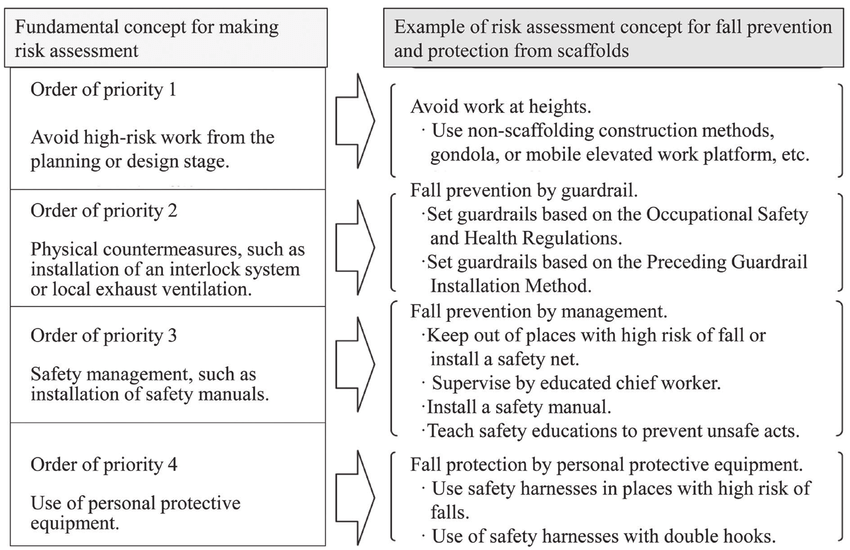Our Dementia Fall Risk Statements
Getting The Dementia Fall Risk To Work
Table of ContentsThe Facts About Dementia Fall Risk UncoveredDementia Fall Risk - QuestionsThe smart Trick of Dementia Fall Risk That Nobody is DiscussingDementia Fall Risk for Beginners
A loss risk analysis checks to see how likely it is that you will certainly drop. It is mostly provided for older adults. The evaluation generally consists of: This consists of a series of concerns concerning your overall wellness and if you've had previous falls or troubles with balance, standing, and/or strolling. These tools examine your strength, balance, and stride (the means you walk).STEADI includes screening, analyzing, and intervention. Interventions are referrals that might reduce your risk of falling. STEADI consists of 3 actions: you for your danger of dropping for your danger variables that can be enhanced to attempt to avoid drops (as an example, balance issues, impaired vision) to lower your threat of dropping by making use of effective strategies (for instance, offering education and learning and sources), you may be asked numerous inquiries consisting of: Have you dropped in the previous year? Do you really feel unstable when standing or strolling? Are you stressed over dropping?, your copyright will certainly examine your toughness, equilibrium, and stride, utilizing the complying with fall analysis devices: This test checks your gait.
If it takes you 12 seconds or even more, it might suggest you are at higher danger for a loss. This test checks toughness and balance.
The positions will certainly obtain more challenging as you go. Stand with your feet side-by-side. Move one foot halfway onward, so the instep is touching the big toe of your various other foot. Move one foot completely before the other, so the toes are touching the heel of your various other foot.
Some Known Factual Statements About Dementia Fall Risk
Most drops happen as a result of several adding factors; as a result, taking care of the danger of falling starts with recognizing the factors that add to fall risk - Dementia Fall Risk. Some of the most relevant threat variables include: Background of previous fallsChronic clinical conditionsAcute illnessImpaired stride and balance, reduced extremity weaknessCognitive impairmentChanges in visionCertain risky drugs and polypharmacyEnvironmental variables can also increase the threat for drops, consisting of: Insufficient lightingUneven or damaged flooringWet or slippery floorsMissing or harmed handrails and get barsDamaged or incorrectly fitted equipment, such as beds, wheelchairs, or walkersImproper use assistive devicesInadequate supervision of the people living in the NF, including those who display hostile behaviorsA effective fall threat management program requires a complete clinical evaluation, with input from all members of the interdisciplinary team

The care plan need to also consist of interventions that are system-based, such as those that promote a secure atmosphere (appropriate lighting, hand rails, grab bars, etc). The efficiency of the treatments need to be examined regularly, and the treatment strategy revised as required to mirror adjustments in the fall danger assessment. Implementing a fall threat administration system using evidence-based ideal practice can lower the frequency of falls in the NF, while restricting the possibility for fall-related injuries.
Some Known Details About Dementia Fall Risk
The AGS/BGS guideline recommends screening all grownups matured 65 years their explanation and older for fall threat annually. This screening contains asking patients whether they have fallen 2 check this site out or more times in the past year or looked for clinical attention for a fall, or, if they have not dropped, whether they feel unstable when walking.
Individuals who have actually dropped when without injury needs to have their equilibrium and gait examined; those with stride or balance irregularities should get additional analysis. A history of 1 autumn without injury and without gait or equilibrium problems does not require further assessment beyond ongoing yearly fall danger screening. Dementia Fall Risk. A fall threat evaluation is needed as component of the Welcome to Medicare assessment

The 5-Second Trick For Dementia Fall Risk
Recording a drops history is one of the quality indications for loss prevention and administration. copyright medications in specific are independent forecasters of falls.
Postural hypotension can commonly be reduced by decreasing the dose of blood pressurelowering medicines and/or stopping drugs that have orthostatic hypotension as a negative effects. Use above-the-knee assistance pipe and copulating the head of the bed boosted may also reduce postural decreases in blood stress. The preferred components of a fall-focused physical exam are received Box 1.

A pull time better than or equal to 12 secs recommends high fall risk. The 30-Second Chair Stand examination assesses lower extremity toughness and equilibrium. Being not able to stand from a chair of knee height without making use of one's arms suggests boosted fall risk. The 4-Stage Equilibrium test assesses fixed balance by having the patient stand in 4 positions, each progressively a lot more difficult.